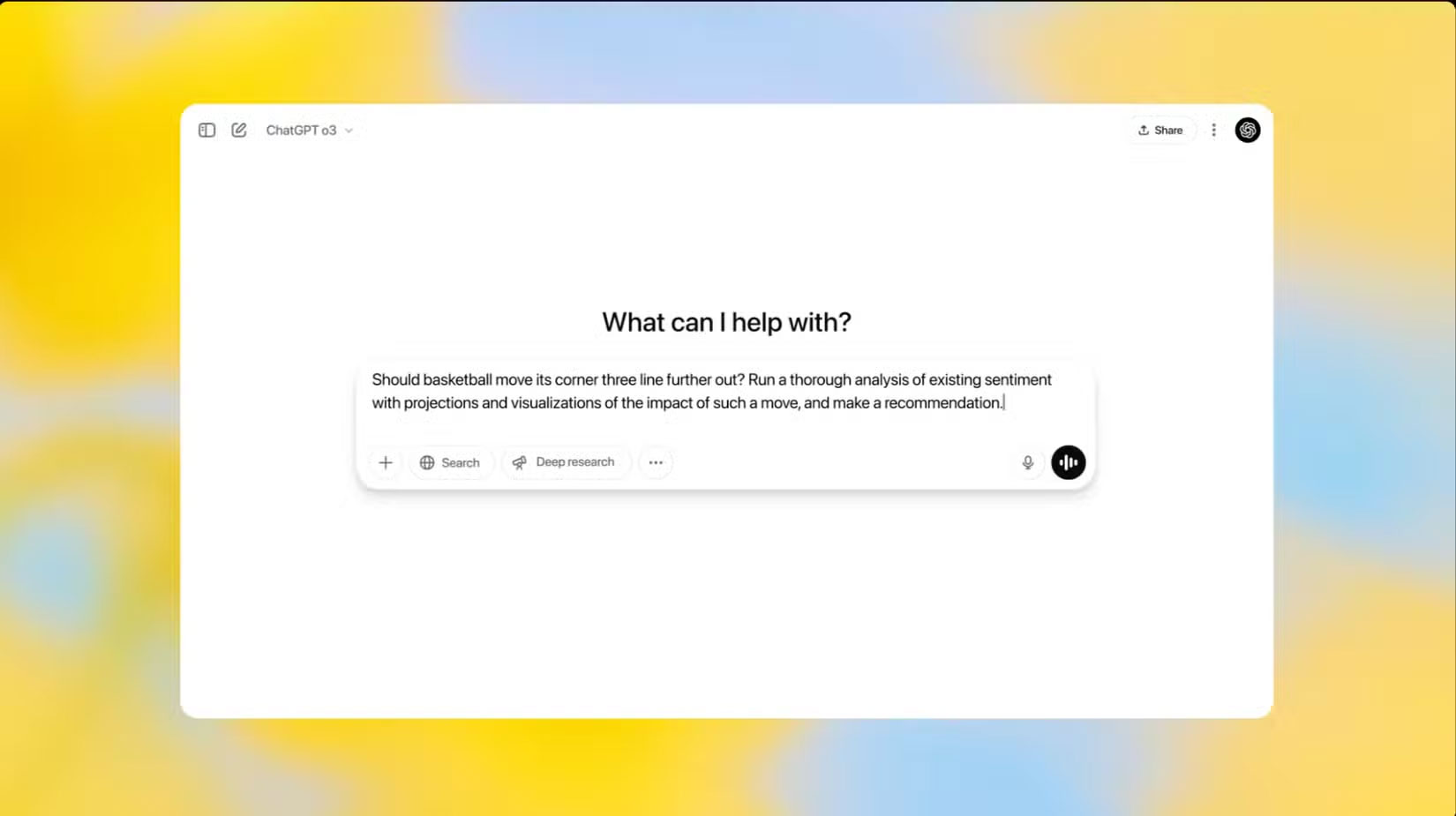How to choose the right ChatGPT model for each task
Not all ChatGPT models are created equal, and choosing the wrong one can lead to slow output, poor performance, and worst of all, AI hallucinations . Fortunately, OpenAI has taken the time to help users choose the best model for any task, and finally makes it clear when you should use each model.
When to use each OpenAI model

With OpenAI constantly releasing new AI models, choosing one for a specific task can be confusing. That's why OpenAI's explanation of when to use each model is so welcome: Whether you're solving technical problems, conducting complex research, or planning a strategy, you'll always be able to make the right choice.
GPT-4o : Everyday Multitasking Tool
GPT-4o is perfect for everyday tasks, with fast response and enough power to meet those needs. You can use it to complete common tasks like summarizing long articles or meeting notes, drafting emails, brainstorming ideas, proofreading reports, etc.
It's also multimodal, so you can use GPT-4o to create images, while its inputs can range from text and documents to audio and video, with support for live video analysis. This is the best place to start if you want a reliable, versatile assistant.
GPT-4.5 : Creative Collaboration Assistant
OpenAI released ChatGPT 4.5 in February 2025 and is currently the recommended model for creative tasks. It excels because it is optimized to perform best on tasks that require human-like creativity. If you need to communicate with individuals or groups, this is the best choice.
The key attributes that make this model perfect for communications include emotional intelligence, clear communication, and human-like intuition. It's ideal for writing engaging posts, communicating empathetically, and brainstorming. So, if you want to craft marketing copy for your company's latest product release that matches your brand's tone of voice, GPT-4.5 is the ideal choice.
OpenAI o4-mini: Quick engineering assistant
The OpenAI o4-mini is built for speed. But that speed comes at a cost. Unlike its larger competitors, it can be slow to dig deep when given a task. It excels primarily at handling simple, quick technical tasks. For this reason, the model is ideal for simple technical tasks where the answer doesn't require much advanced knowledge.
For students, this is the model to choose when they need help with STEM-related homework without deep reasoning. For programmers, OpenAI o4-mini is the model to use when they need to fix simple code errors, commonly found on Stack Overflow.
OpenAI o4-mini-high: Detailed engineering assistant
If you need help with more advanced topics or technical issues beyond the scope of o4-mini, then o4-mini-high is the answer. Use this model for advanced programming, math, and science topics. However, responses will take a little longer than o4-mini. However, the benefit is in the quality and depth of the output.
So if you need the depth and accuracy from ChatGPT on advanced technical topics, use this model. For example, you can use this model to solve complex math problems or to get detailed explanations of complex computer science algorithms.
OpenAI o3: Solving complex, multi-step tasks

OpenAI o3 is also built for some complexity. It picks up where o4-mini-high left off and goes even further by tackling tasks that are not only complex but also involve multiple steps.
You can use o3 to perform multi-step analysis on a dataset, develop a business expansion strategy by analyzing market dynamics and competitors, or review system logs from various microservices to find optimization strategies.
OpenAI o1 Pro Mode: Deep Thinking
If you work at the cutting edge of your industry, then the o1 pro mode is the model to go for. It certainly doesn't rank high on the list for speed, but that's by design. It's primarily aimed at high-risk industries and tasks that require detailed analysis and where any mistake could result in economic loss, such as finance, law, and healthcare.
For example, you can use OpenAI o1 to design financial forecasting algorithms and generate policy documents.
Don't just use a single ChatGPT model for every task. While the latest model may seem like a one-size-fits-all solution, the guidelines above show that no single model is superior in every way. Choose a model based on the type of task you're working on, which will, of course, change over time.
 Remove These 7 Pre-Installed Apps From Your Smart TV!
Remove These 7 Pre-Installed Apps From Your Smart TV! What is Google AI Mode? How does it work?
What is Google AI Mode? How does it work? Why is storing passwords in the Notes app a bad idea?
Why is storing passwords in the Notes app a bad idea? Should I use 2 VPNs at the same time?
Should I use 2 VPNs at the same time? Windows is now smart enough to change settings for you
Windows is now smart enough to change settings for you Ransomware is on the rise in 2025: Here are 6 quick tips to protect your data!
Ransomware is on the rise in 2025: Here are 6 quick tips to protect your data!